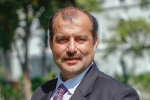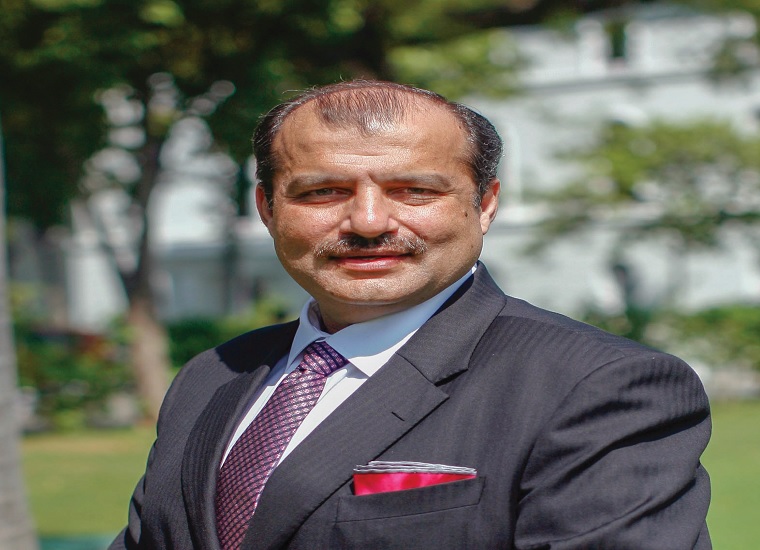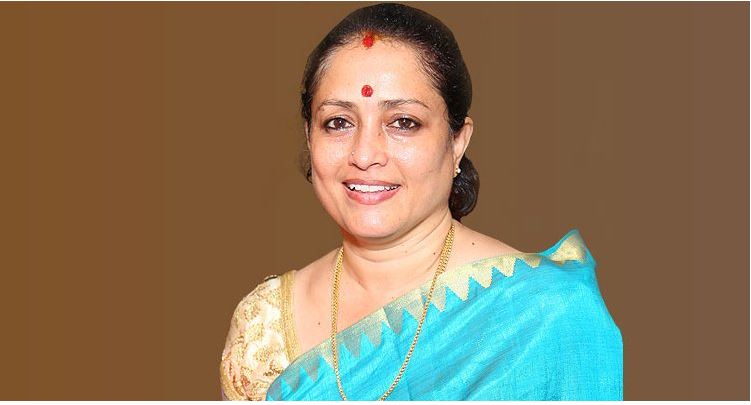In the last 19 months, many companies in India have introduced mental health benefit schemes and working professionals feel more supported than ever before. 70 percent of professionals in India said their employer supported their mental well-being compared to 65 percent globally, as per the latest ADP report, ‘People at Work 2021: A Global Workforce View’. However, the stress caused by the pandemic has still been a significant challenge for professionals in India. Especially for leaders, as they face stress to ensure business continuity, manage their emotions as well as teams, and ensure workplace safety. But often we have skipped talking about how and what leaders have been doing to address this. Leading by example, how are leaders taking care of their own mental health? Leaders don’t have to be perfect. They don’t have everything figured out. They deal with different kinds of stress on a daily basis. Yet they are expected to always be calm and sorted. Let’s break this stigma. Helping us break the glass ceiling of misconceptions around mental health, some of the business and HR leaders shared with us how they cope with stress and take care of their mental health: Remember, you are not alone!: Balajee Sowrirajan, MD, Samsung Semiconductor India R&D Center (SSIR) “I feel looking at every challenge as an opportunity and not as a stress point, makes the difference. To stay positive in challenging situations, I look back at situations that I tided over successfully. Though our job as leaders is like a sponge, to absorb the pressure but not to pass it down to the next level. However, I have learnt that leaders should normalise leaning on their people and acknowledge the power of the team to solve problems. Remember, you are not alone! It’s also important for leaders to realise that they are vulnerable, you are not a superhuman. it’s okay to make mistakes and accepting that makes you human. Being real removes a lot of stress!” Set healthy boundaries at work: Piali Dasgupta, Senior Vice President – Marketing, Columbia Pacific Communities “I have lived with chronic depression and anxiety for the past 23 years. Dealing with illnesses has become a way of life. However, even after over two decades of fighting this disease, I don’t think it gets easier to live with it. What does happen is that you learn to identify trigger points at work, and at home, and try to protect yourself from these trigger points. Work stress is inevitable for any leader because with added responsibilities come added stress. That’s not something one can run away from unfortunately. But what is of utmost importance is to set healthy boundaries at work, and try to stay away from situations that can be potential triggers or stressors. Obviously, this is much easier said than done. But leaders need to look after themselves first in order to look after their businesses and verticals well. Share your vulnerabilities with your peers & team members: Jai Balan, Head – Human Resources, Bharti AXA Life Insurance “With added responsibilities and work pressure as a leader, bottling up emotions and anxieties under the misplaced notion that a leader needs to always appear strong and resilient just multiplies stress. Therefore, for a leader, it is important to exhibit and share your vulnerabilities with your peers and team members to create a safe space for them to know that it’s okay to feel stressed or anxious about work. Further, to manage workplace stress and anxiety, it is important to compartmentalize your thinking so that work-related matters do not stress you during your time-off.” Yoga & prioritising family time keeps mental health in check: Sarada Vempati, SVP & Head of Technology Infrastructure, Wells Fargo India & Philippines “I was in my first week on the job at Wells Fargo. My daughter was away studying in the U.S., adding to my personal anxieties. As part of the leadership team at the bank, we were pretty much on 24×7. Balancing that with personal stressors pushed all our coping resources to the limit, including mine. How did I cope? I chose something I could do together with my daughter thousands of miles away – we both joined a yoga class! It was early in the morning for me and late evening for her. We felt closer and also connected doing it together, while relaxing and also keeping our mental balance during a very stressful time.” Breaks, binging on Netflix & gratitude keeps stress away: Anupam Trehan, Senior Director, People & Communities, Cisco India & SAARC “As a leader and a mother, I have to focus on keeping myself strong-mentally and emotionally, to be able to support the well-being of our employees and our community networks while also managing home. A few things that I try to do to help me cope is – blocking time on my calendar for breaks. I may not always be successful, but I have realized that when you can manage your calendar, you can get more done, feel less overwhelmed, and be more relaxed. Secondly, I consciously step away from work for a few hours to spend time with family. Thirdly, I keep 30 minutes to get some exercise, read a book, or to do any activity that acts as a de-stressor. Sometimes that may just be binging on Netflix. Lastly, two things that get me through when I am stressed or upset are square breathing and gratitude. Gratitude to be surrounded by amazing people at work & home who are there with me, behind me to lift me up.” Having a mentor for guidance is enabling: Suma PN, Director HR, Otis India “Early in my career, I realized that taking care of ‘self’ is important for me, if I have to take good care of people around me, including the teams that I lead and the people I am responsible for. Staying physically active and paying attention to my dietary habits has helped me enormously over the years. Practicing Yoga keeps me focused and improves my concentration. Having a mentor for guidance enables me to share and learn from the experiences of the person I trust in and who has confidence in my abilities as an individual and as a leader. Looking at the bigger picture and the wonders of this beautiful life always keeps me grounded, with a positive outlook.” Have some me-time: Mubarak Begum, HR Head of Kristal.AI “As an HR professional handling a workforce spanning multiple countries, the challenges are manifold. Add to that the pandemic, and most days I feel there aren’t enough hours in the workday. I’ve learnt that having some me-time is crucial for your mental health. I begin my day with meditation and go for a run on alternate days. On weekends, I enjoy quality time with family or just go for a drive. I also take time out to read. On weekly calls with my team, we’ve started taking some time to talk about anything but work. This helps keep things light.” Unwind holistically for better mental health: Nimisha Das, Director – HR, Kellogg South Asia “My personal mantra is to ensure I unwind holistically, so it invariably includes activities that help me de-stress physically, mentally, and socially. I love spending quality time with my loved ones and my cat, Tango. I practice yoga as it caters to my internal as well as external well-being. Whenever I get time off from work, I travel away from the city because I truly believe travelling teaches one a lot.” Nothing is more important than ‘you’ and ‘your mental wellness’: Rajesh Rai, VP – People Team and Head of HR, India, GlobalLogic “In every individual’s life, one would find themselves grappling with stressful times, and such experiences can be overwhelming. In the present times, stress is something we all have to manage by taking approaches that are personalized to us. In stressful situations, I manage stress by disassociating myself from the triggers and seeking things that I love doing to bring more positivity for myself in that very moment. These could be immersing myself in meditation, listening to music, spending quality time with loved ones, going for a run, or sometimes even simply indulging myself with a sweet treat. This little time of self-care enables me to process my thoughts and realign myself to tackle the stress head-on. Don’t stress the could haves: Ruhie Pande, CHRO, Godrej Housing Finance “I read this at the tube station during my travels and it stayed with me – ‘Don’t stress the could haves , if it should have, it would have’ ! I truly believe stress is often an outcome of trying to control things and my focus is to embrace the process and give things my 100% without trying to influence outcomes. Pursuing a hobby helps as well. I have an active interest in volunteering for animals, reading & writing and I ensure to take time out to invest in them.“ Work is not a sprint but a marathon: Ramya Sampath Sharma, Chief People Officer, GreyOrange “The fact remains that for all the excitement of the VUCA world, the relentless nature of our lives today [work and personal] has a massive impact on our mental health. As leaders, it is critical that we balance the demands of our work and organization with the need to be empathetic to employees. This requires the ability to understand that work is not a sprint but a marathon. This is my own mantra and the secret to my ability to keep going in this fast paced work.” Pay close attention towards your own mental well-being: Sushant Patnaik, Head-HR, Aeris Communications “Last 18 months has literally condensed decades of learning in a few months. Adapting to a new normal, shifting from brick and mortar to online grocery shopping, online education and healthcare and so on. It is normal to end up in a condition of tight strain, with life slowing to a standstill at times, stuck between the four dividers of your room and the sorry state of affairs around. As a wellness trainer myself, I am acutely aware of this stress that many of us feel. Also, as the bridge between the business and employees, I keep reminding myself continuously that I have a greater responsibility to undertake. Therefore, I pay close attention towards my own mental well-being and also encourage my colleagues and loved ones to do the same. These have been testing times, requiring each one of us to be calm and empathetic towards others. Every leader has to wear numerous hats, and in my case, I have to ensure employees’ stability and help them through grievances. That is only possible if I take good care of my personal well-being.”
Continue reading “Keeping a check on Mental Health: Leaders’ side of the story”




